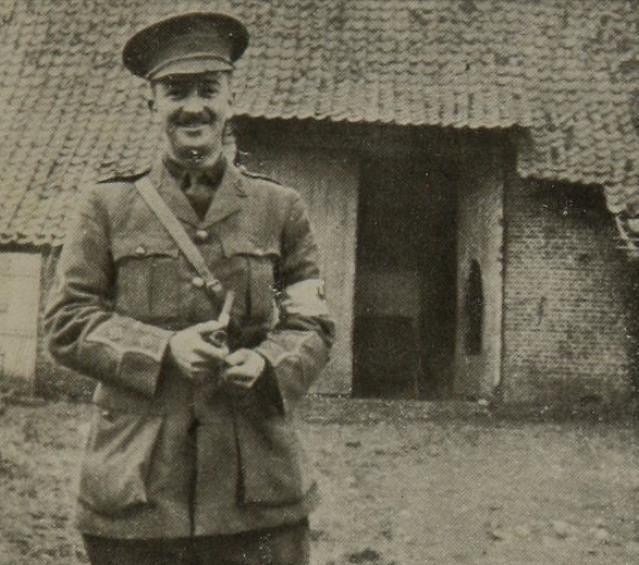“I wouldn’t have lost this chance of serving my country. It has been a hard apprenticeship, but it has done me good in many ways. At present I am fitter than I have ever been before -sunburnt and full of life. I may not come through this war, but I have no regrets so far.”
The book Letters from a Young Queenslander by Robert Marshall Allen records one man’s experiences in the Great War. His description is detailed and powerful. Medical practices of the time, and those used to combat the conditions and injuries of trench warfare are described and intertwined with a vivid description of the environment surrounding the front line.

A young Queensland doctor, Allen answers the call to war in September 1914. Eager to contribute, he was initially assigned far from the front line in Aldershot. There he was mainly responsible for monitoring the health of recruits, weeding out men unfit for duty and immunising men for diseases they were likely to encounter at the front. Not satisfied, he took the first opportunity to journey closer to the front. Over time he worked at a variety of medical posts and was close to the front during his work with clearing hospitals and his occasional visit to the trenches. At the beginning of his narrative, on the 9th of November 1914, he describes how medical support was organised:
“When a man is wounded in the trenches he lies there all day. His regimental doctor gives him first aid if he is there on the spot, otherwise at night. Parties then come up from the clearing hospital and remove the cases. These hospitals renew dressings if necessary, and classify all the men. Only very urgent cases are operated on by them. Then the wounded leave by motor transport to the nearest station, or are put straight on the hospital trains. These are staffed by doctors and nurses, and run to Boulogne. Here the wounded are distributed to the various general and stationary hospitals.”
Operating so close to the front and supporting major battles in Neuve Chapelle and Ypres, Allen was able to describe the atmosphere in detail; the mud, the trenches, the constant fear of snipers, the “Jack Johnsons”, the “Woolley Bears”, the wounded and the dead.
“Down this road, absolutely cut to pieces by the traffic and shells, and covered with dead and wounded, were men groaning and crying for help mid the screaming of shells. At one spot shrapnel had blown a lot of men into the ditch, where they drowned...”
He found the wounds terrible; particularly those caused by shrapnel and mental shock, the work demanding and consuming. Medical practices and new innovations, such as the use of salt with citrate of soda, are described closely.
“A five per cent solution of salt with citrate of soda is the dressing for all wounds…The principle roughly is that all the usual chemical disinfectants kill the tissues as well as the organisms, and so locally lower the power of the tissues to kill off germs still alive, but by using a saline solution…the tissue is not killed, and so one endeavours to combat infection by stimulating the natural resources of the body...”
His narrative continues until the 13th of December 1915. After this his story continues in Mesopotamia and India : a continuation of ‘Letters from a young Queenslander’. A blog story about this book can be found in our World War 1 archive for November 2013.
You can view the digitised version of Letters from a Young Queenslander via our OneSearch Catalogue.
Rebecca Kilner – Library Technician, State Library of Queensland
Comments
Your email address will not be published.
We welcome relevant, respectful comments.